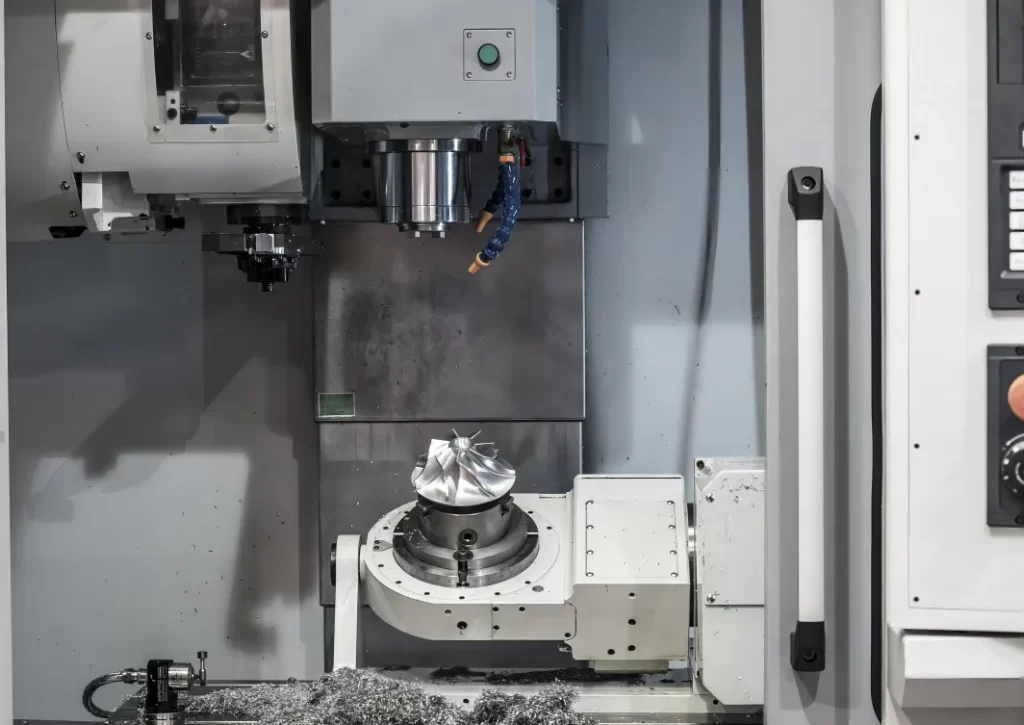4-Axis vs 5-Axis CNC:In depth Understanding for Better
What is 4-Axis CNC Machining?
There are two types of 4-axis CNC machining: indexing and continuous.
1. Index 4-axis CNC machining is when the 4th axis (A-axis) rotates while the machine is not cutting the material. Once the correct rotation is selected, braking is applied and the machine resumes cutting.
2. In continuous 4-axis machining, the machine can cut the material while the A-axis rotates at the same time. This allows complex arcs to be machined, such as the profile of cam lobe and helix.
What is 5-Axis CNC Machining?
In addition to the three linear axes, 5-axis machining introduces two additional rotary axes (typically A-axis rotating around the X-axis, B-axis rotating around the Y-axis, or C-axis rotating around the Z-axis). This enables simultaneous movement of the cutting tool along multiple axes, providing unparalleled precision and the ability to machine complex shapes in a single setup.
There are two main types of 5-axis CNC machining: 3+2 axis Machining and fully continuous 5-axis machining.
1.3+2 Axis CNC Machining
It is one variation of 5-axis machining. It involves fixing the workpiece at a specific angle and then using the 3 linear axes and 2 rotational axes to perform the machining operations. This approach offers some of the benefits of simultaneous 5-axis machining while simplifying programming and setup.
2.Fully Continuous 5-Axis CNC Machining:
It allows for continuous and simultaneous movement of all five axes, offering the highest level of precision and flexibility. It enables efficient machining of complex contours, undercuts, and sculpted surfaces without the need for multiple setups.
What Is the Difference Between 4-Axis vs 5-Axis CNC Machining?
While both techniques offer enhanced capabilities compared to 3-axis machining, 5-axis machining provides greater freedom to access complex geometries from multiple angles.
1.The primary difference between 4-axis vs 5-axis CNC machining lies in the number of rotational axes. 4-axis machining allows rotation on the A-axis, while 5-axis machining allows rotation on two of the three axes (A-axis, B-axis, or C-axis).
2.4-axis machining is suitable for parts that require machining multiple sides without fixture change-overs, while 5-axis machining is capable of more complex and versatile operations.
3.5-axis machining offers the ability to process angled features and complex curved 3D surfaces that are not possible with 4-axis or 3-axis machines.

What Are the Benefits of Using 4-Axis vs 5-Axis CNC Machining?
1.Enhanced precision and accuracy in machining complex geometries
2.Reduction in setup time and increased efficiency
3.Ability to tackle intricate designs with fewer setups
4.Improved surface finishes and reduced secondary operations
5.Higher productivity and faster turnaround times
How to Choose Between 4-Axis vs 5-Axis CNC Machining:
Your Requirements: Assess the complexity of your designs and whether the added capabilities of 5-axis machining are necessary.Operating Procedures: Evaluate your team’s expertise and determine if additional training is needed to fully leverage 5-axis capabilities.
Four-axis and five-axis CNC machining applications:
Aerospace and aviation components
Automotive parts and prototypes
Medical implants and devices
Sculptures and artistic designs
Complex mechanical parts
